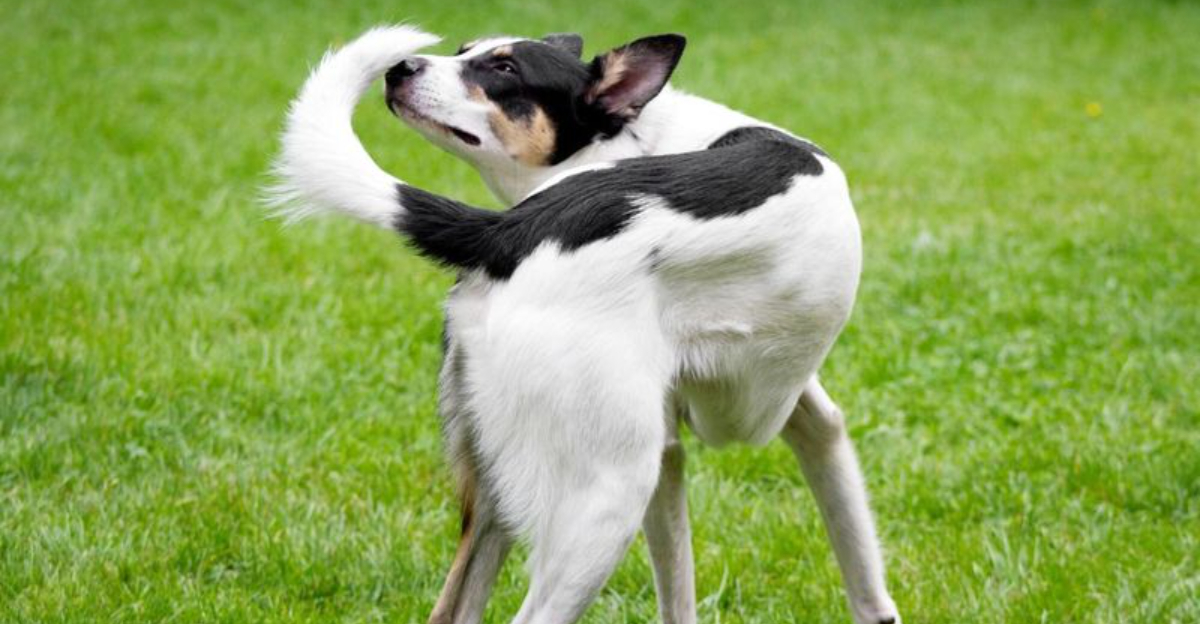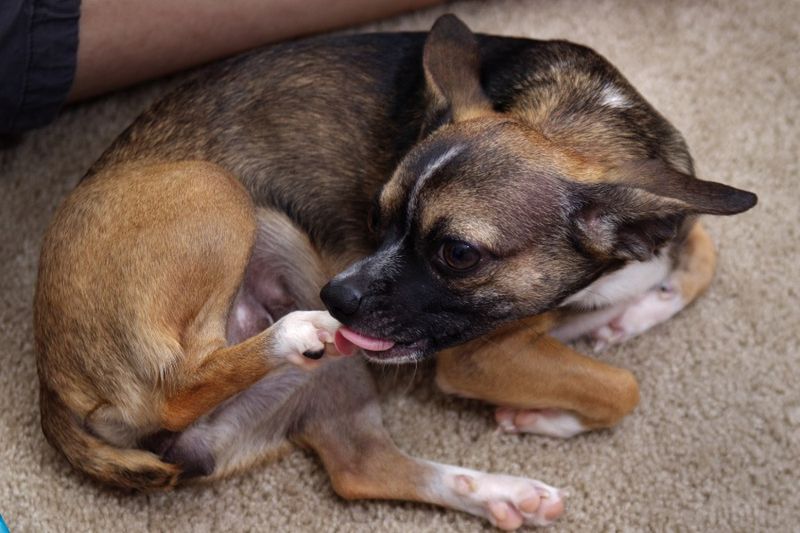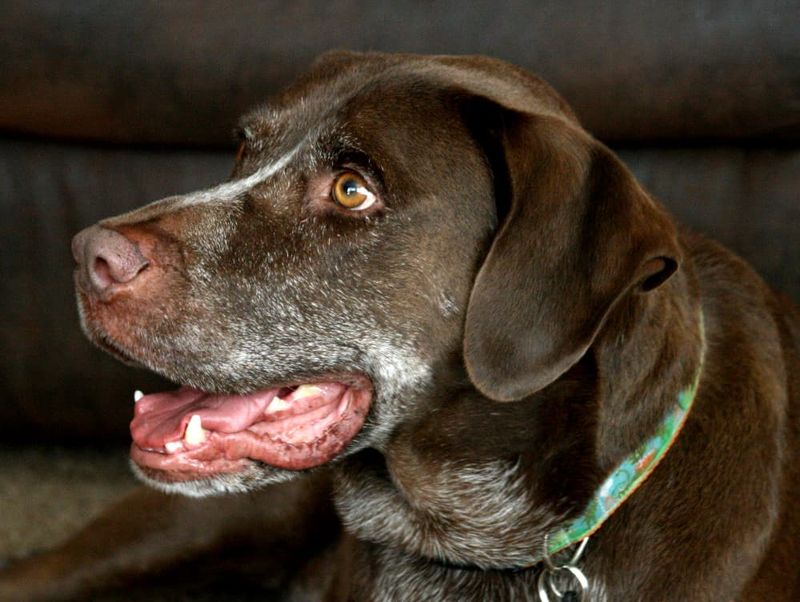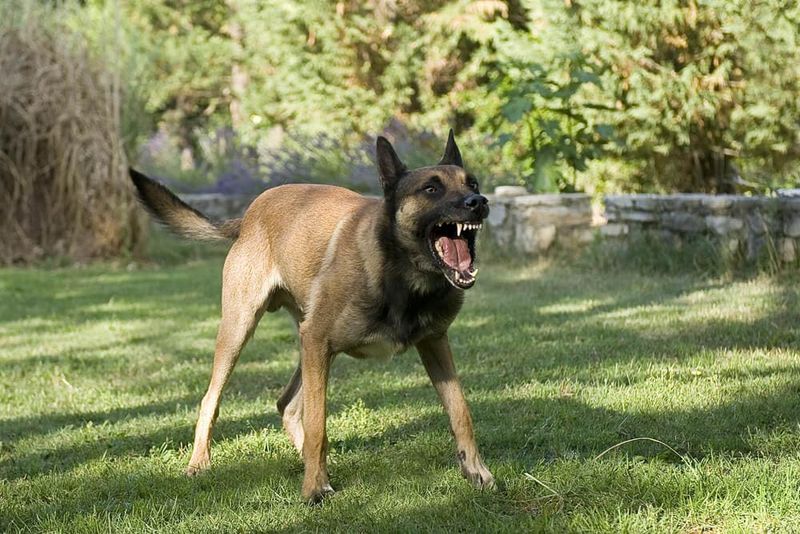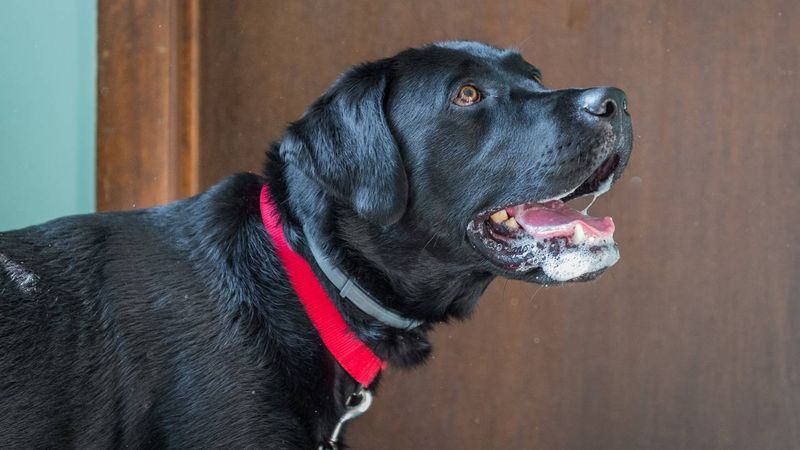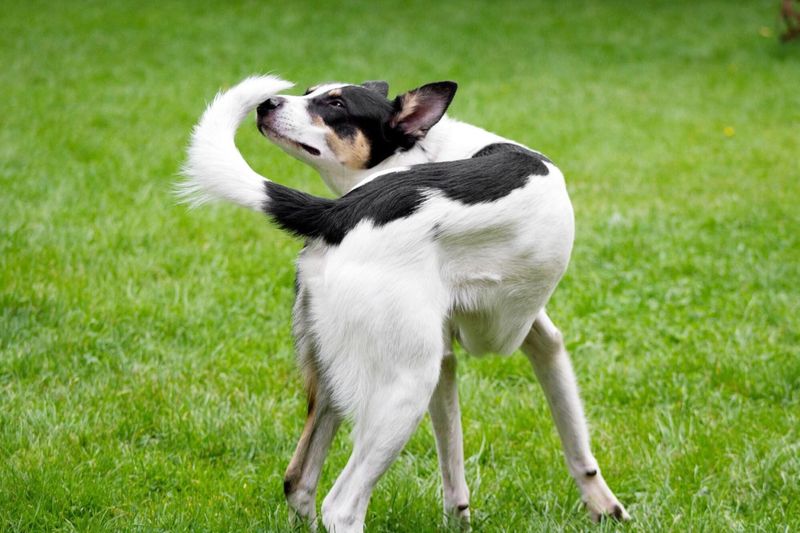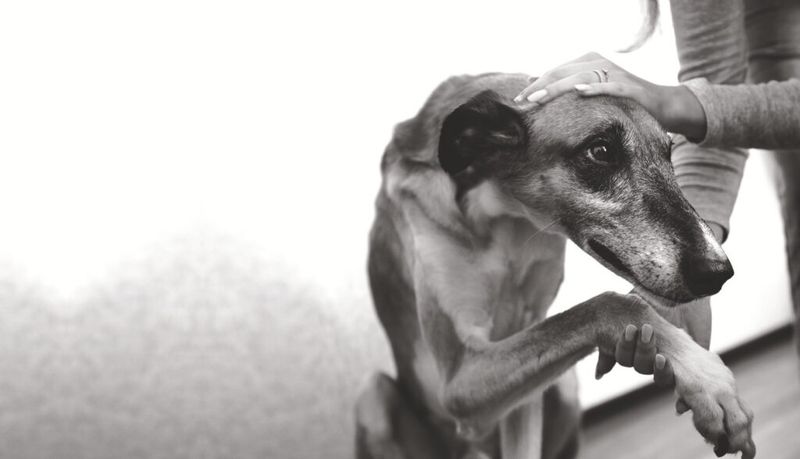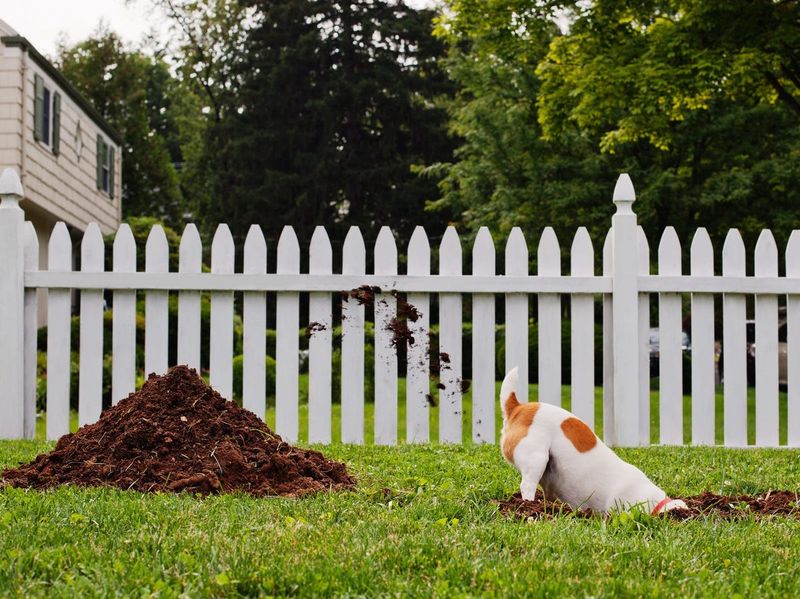Dogs, much like humans, experience anxiety that often goes unnoticed by their owners. Recognizing these subtle signs can improve their well-being. This blog post uncovers 18 hidden anxiety signs in dogs that most owners miss, helping you become more attuned to your furry friend’s emotional needs.
Excessive Licking
Dogs often lick their paws as a grooming behavior, but excessive licking can indicate anxiety. When a dog licks constantly, it might be trying to soothe itself, much like humans bite their nails. This behavior can lead to sores and infections if not addressed.
Understanding the root cause of this anxiety is crucial. Is it boredom, a change in their environment, or perhaps a deeper emotional issue? Observing your dog’s routine can provide clues.
Consulting a vet might be necessary to rule out medical conditions. Addressing the root cause can help alleviate this obsessive behavior.
Panting Without Cause
Panting is a natural response to exertion or heat. However, if a dog pants excessively without these triggers, it could be feeling anxious. This panting is often accompanied by other signs of stress, such as drooling or trembling.
Consider the dog’s environment: have there been changes in routine or loud noises? Identifying and minimizing these stressors can help.
If panting persists, a vet consultation is advisable to ensure there’s no underlying health issue. Understanding your dog’s unique triggers is key to managing their anxiety effectively.
Sudden Aggression
Anxiety doesn’t always manifest as fear; sometimes, it appears as sudden aggression. A previously gentle dog might growl or snap, particularly if it feels cornered or threatened. This can be confusing for owners who aren’t aware of any changes.
It’s vital to assess the situations that trigger this aggression. Have there been new additions to the household or frequent visitors?
Sometimes, anxiety might be rooted in past trauma. A professional trainer or behaviorist can help address these aggression issues, ensuring your home remains peaceful and safe for all.
Pacing Back and Forth
Like humans, dogs pace when restless. In dogs, pacing can be a sign of anxiety, especially if it becomes a frequent occurrence. This behavior is often witnessed during stressful situations such as thunderstorms or fireworks.
Pacing may be your dog’s way of coping with stress, trying to find an outlet for their nervous energy. Observing when and where this behavior happens can offer insights into the triggers.
Creating a calm and safe space with distractions can help alleviate this anxiety. Patience and understanding are key in helping your dog feel secure.
Trembling Without Cold
Shivering isn’t always a response to cold weather. When a dog trembles without any apparent temperature drop, anxiety might be the cause. This trembling can often be accompanied by signs like hiding or avoidance.
Consider recent changes: new furniture, visitors, or even a different daily routine? Dogs are creatures of habit, and even small changes can cause stress.
Reassurance through a steady routine and gentle interaction can help. If trembling continues, seeking advice from a vet or behaviorist ensures your dog gets the support it needs.
Unusual Barking
While barking is a communication tool for dogs, sudden, excessive barking can signal anxiety. This isn’t just about vocalizing needs; it’s a distress call. Dogs might bark at seemingly nothing or become overly reactive to usual sounds.
This behavior can disrupt the peace and indicate underlying stress. Identifying patterns in this barking—such as time of day or specific triggers—can help address the problem.
Intervention might include training or environmental adjustments to reduce stressors. Understanding the reason behind the bark is the first step to resolving it.
Avoidance Behaviors
Avoidance is a clear sign of a dog’s discomfort. When a dog starts hiding or avoiding certain places or people, it’s expressing anxiety. This behavior can be triggered by past traumas or recent changes in the home environment.
Observing what your dog is avoiding can provide clues to their stressors. Is it a particular person, object, or sound? Recognizing these factors is essential in helping your dog feel at ease again.
Encouraging positive associations with the stressor through treats and gentle exposure can gradually reduce anxiety.
Loss of Appetite
A sudden drop in appetite can be alarming for dog owners. While it might indicate a physical ailment, anxiety is often a hidden cause. Stress can affect a dog’s interest in food, leading to skipped meals and weight loss.
Think about recent changes: a move, new pet, or altered schedule. These can impact your dog’s sense of stability. Maintaining a consistent feeding routine and ensuring a quiet eating space can help.
If the issue persists, consulting a vet is crucial to rule out health problems and get guidance on managing stress-related anorexia.
Destructive Behavior
When dogs are anxious, they often act out destructively. Chewing furniture, digging excessively, or shredding items can all be signs of anxiety-driven behavior. This is not just about boredom; it’s an outlet for their stress.
Addressing this behavior involves understanding the root cause. Is the dog alone too often, or is there a lack of physical activity? Increasing interaction and providing engaging toys can help channel their energy positively.
A professional trainer might offer solutions that suit your dog’s specific needs, promoting healthier coping mechanisms.
Excessive Drooling
While drooling is common in some breeds, excessive drooling without physical exertion or heat can signal anxiety. This is often seen in stressful situations like vet visits or travel.
Understanding what makes your dog drool excessively is key. Are they fearful of new environments, or does separation trigger this response? Identifying stressors allows for better management.
Using calming techniques, such as gentle music or comfort items, can provide relief. If drooling continues without improvement, a vet should evaluate potential health concerns.
Compulsive Tail Chasing
Tail chasing can be playful but when obsessive, it signals anxiety. This behavior can lead to injury or worsen over time if not addressed. It’s often a response to stress or boredom.
To manage this behavior, ensure your dog has enough physical and mental stimulation. Are they getting enough playtime, or is their environment too restrictive? Interactive toys and regular exercise can help.
If the compulsive behavior persists, consulting a behaviorist can provide strategies to ease anxiety and improve your dog’s overall well-being.
Excessive Shedding
Shedding is a natural process, but anxiety can cause excessive hair loss. This might become more noticeable during stressful periods, like moving to a new home or introducing a new family member.
Assess your dog’s environment: have there been changes that could trigger stress? Providing a stable, comforting atmosphere can mitigate excessive shedding.
Regular grooming and stress-reducing techniques, such as massage or aromatherapy, might help. Persistent issues should be discussed with a vet to eliminate health concerns and ensure your dog’s comfort.
Frequent Yawning
Yawning isn’t just a sign of tiredness; in dogs, it often indicates stress. A dog that yawns frequently may be feeling anxious, especially in unfamiliar situations or environments.
Observing when these yawns occur can help pinpoint stress triggers. Are they happening during social interactions, or perhaps in noisy environments?
Providing a calm, reassuring presence can help your dog feel secure. If yawning persists, it might be beneficial to consult with a veterinarian or a dog behaviorist to explore further stress-relief options.
Hypervigilance
Hypervigilance in dogs manifests as constant alertness and difficulty relaxing. This state is often accompanied by scanning the environment and reacting to minor stimuli.
Consider recent changes: new pets, visitors, or alterations in routine? These can heighten a dog’s sense of threat, leading to anxiety.
Creating a tranquil environment and establishing a routine can help soothe this hyper-alert state. Gradual exposure to stressors with positive reinforcement might reduce anxiety. Consulting a behaviorist can offer tailored strategies to address hypervigilance.
Clinginess
While some dogs are naturally affectionate, sudden clinginess can signal anxiety. A dog that follows its owner everywhere might be feeling insecure or stressed.
This behavior can stem from changes such as a new pet, family member, or even a recent move. Providing reassurance and security is key.
Ensuring your dog has a comfortable, safe space and gradually encouraging independence can help. If clinginess persists, a vet or behaviorist can offer insights into managing this behavior effectively.
Compulsive Barking
Compulsive barking goes beyond normal communication, signaling deep-seated anxiety. Dogs might bark excessively at nothing or react intensely to minor stimuli.
Recognizing the triggers for this behavior is crucial. Is it noise, separation, or perhaps new surroundings?
Training and environmental adjustments, such as soundproofing or creating a safe space, can help alleviate anxiety. Consulting a trainer or behaviorist can provide strategies tailored to your dog’s needs, promoting calmer behavior.
Obsessive Digging
Digging is natural, but when it becomes obsessive, it may indicate anxiety. This behavior can damage property and stress owners, reflecting a dog’s need to escape or cope with stress.
Consider environmental factors: is the dog left alone often, or are there new stressors? Providing mental and physical stimuli can redirect this energy positively.
If the digging continues, consulting a behaviorist can offer solutions to address this anxiety-driven behavior, ensuring your dog’s happiness and your yard’s well-being.
Excessive Whining
Whining is a natural sound for dogs, but excessive whining can be a sign of underlying anxiety. This behavior often occurs when a dog feels uneasy or distressed.
Understanding the context of the whining is essential. Is it linked to separation, unfamiliar environments, or perhaps new experiences?
Providing comfort and reassurance can help ease this behavior. If whining persists, professional advice from a vet or behaviorist may be necessary to explore deeper anxiety issues and find effective solutions.
